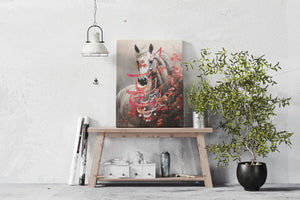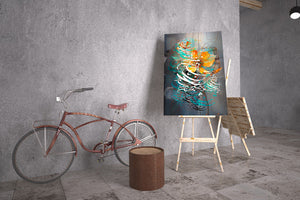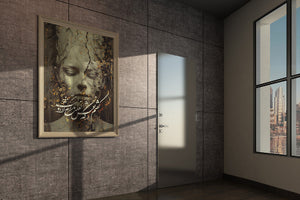Floral Motifs in Persian Art: Beauty Rooted in Symbolism
Nov 04, 2025
Discover how Persian floral patterns blend beauty, history, and meaning in timeless wall art.
Persian art has long been admired for its intricate detail, harmony, and elegance—and few elements capture that beauty better than its floral motifs. From ancient Persian carpets to illuminated manuscripts and modern canvas wall art, flowers have been a universal symbol of life, love, and spirituality. These designs carry deep cultural meanings that continue to inspire artists and collectors around the world.
Origins of Floral Motifs in Persian Art
The use of flowers in Persian design dates back thousands of years, with strong influences from Zoroastrian, Islamic, and poetic traditions. In ancient Persia, nature was viewed as a reflection of divine beauty and order. Artists sought to capture the perfection of creation through stylized depictions of flowers, trees, and gardens—symbols of paradise and eternal life.
During the Safavid Dynasty (16th–17th centuries), Persian floral art reached its peak. These motifs appeared on carpets, ceramics, tiles, textiles, and manuscripts, often combined with Persian calligraphy and geometric patterns to create perfectly balanced compositions. This artistic tradition continues to influence modern Persian canvas prints and digital art today.
Symbolism of Flowers in Persian Art
Each flower in Persian art carries a special symbolic meaning that reflects Persian poetry and philosophy:
Rose – Symbol of love, beauty, and divine perfection. Common in art inspired by Hafez and Rumi.
Tulip – Represents passion, sacrifice, and rebirth.
Lotus – A sign of purity, spiritual awakening, and eternal life.
Cypress Tree – Symbol of strength, immortality, and resilience.
Jasmine and Narcissus – Evoke beauty, innocence, and devotion.
These floral symbols are not only decorative—they communicate emotions, spiritual ideals, and cultural values that are central to Persian identity.
Cultural Significance in Modern Art
In contemporary Persian canvas wall art, floral patterns remain a bridge between tradition and modernity. Digital artists reinterpret classical designs using modern techniques, vibrant colors, and calligraphy to create pieces that blend heritage with modern aesthetics.
Decorating with Persian floral art brings timeless harmony and cultural richness into a home. Whether paired with poetry by Sa’di or Rumi, or featured as a standalone design, these motifs remind us that beauty and meaning are deeply connected in Persian culture.





